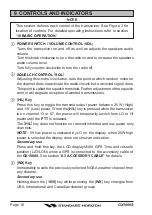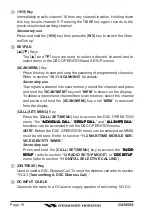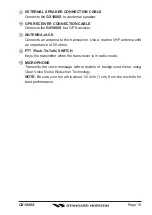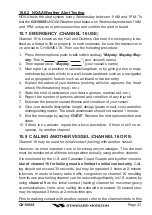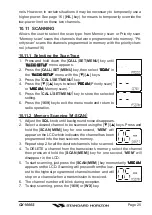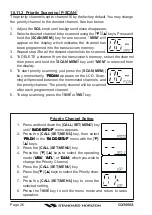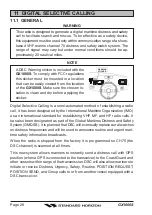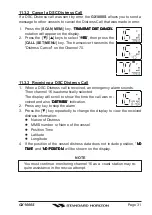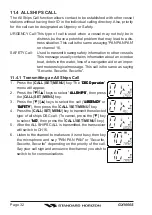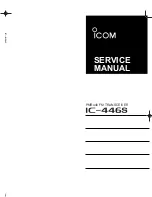
Page 23
GX1000S
10.6.2 NOAA Weather Alert Testing
NOAA tests the alert system every Wednesday between 11AM and 1PM. To
test the
GX1000S
’s NOAA Weather alert feature, on Wednesday between 11AM
and 1PM, setup as in previous section and confirm the alert is heard.
10.7 EMERGENCY
(
CHANNEL 16 USE
)
Channel 16 is known as the Hail and Distress Channel. An emergency is de-
fined as a threat to life or property. In such instances, be sure the transceiver is
on and set to CHANNEL 16. Then use the following procedure:
1. Press the microphone push-to-talk switch and say “
Mayday
,
Mayday
,
May-
day
. This is , , ” (your vessel’s name).
2. Then repeat once: “
Mayday
, ” (your vessel’s name).
3. Now report your position in latitude/longitude, or by giving a true or mag-
netic bearing (state which) to a well-known landmark such as a navigation
aid or geographic feature such as an island or harbor entry.
4. Explain the nature of your distress (sinking, collision, aground, fire, heart
attack, life-threatening injury, etc.).
5. State the kind of assistance your desire (pumps, medical aid, etc.).
6. Report the number of persons aboard and condition of any injured.
7. Estimate the present seaworthiness and condition of your vessel.
8. Give your vessel’s description: length, design (power or sail), color and other
distinguishing marks. The total transmission should not exceed 1 minute.
9. End the message by saying “
OVER
.” Release the microphone button and
listen.
10. If there is no answer, repeat the above procedure. If there is still no re-
sponse, try another channel.
10.8 CALLING ANOTHER VESSEL
(
CHANNEL 16 OR 9
)
Channel 16 may be used for initial contact (hailing) with another vessel.
However, its most important use is for emergency messages. This channel
must be monitored at all times except when actually using another channel.
It is monitored by the U.S. and Canadian Coast Guards and by other vessels.
Use of channel 16 for hailing must be limited to initial contact only.
Call-
ing should not exceed 30 seconds, but may be repeated 3 times at 2-minute
intervals. In areas of heavy radio traffic, congestion on channel 16 resulting
from its use as a hailing channel can be reduced significantly in U.S. waters by
using
channel 9
as the initial contact (hailing) channel for non-emergency
communications. Here, also, calling time should not exceed 30 seconds but
may be repeated 3 times at 2-minute intervals.
Prior to making contact with another vessel, refer to the channel charts in this








